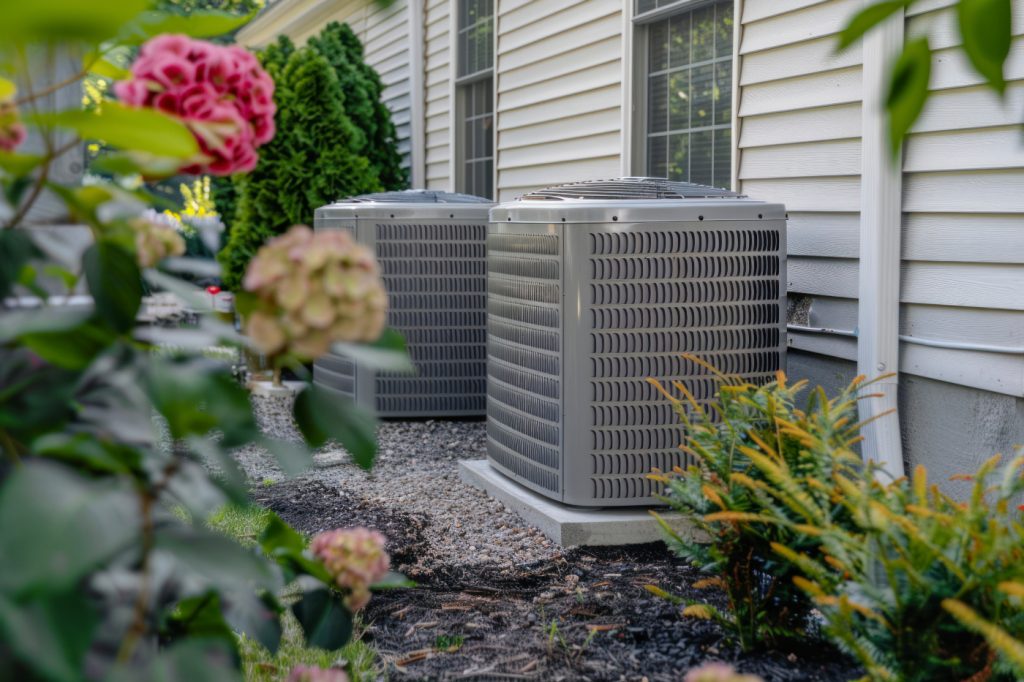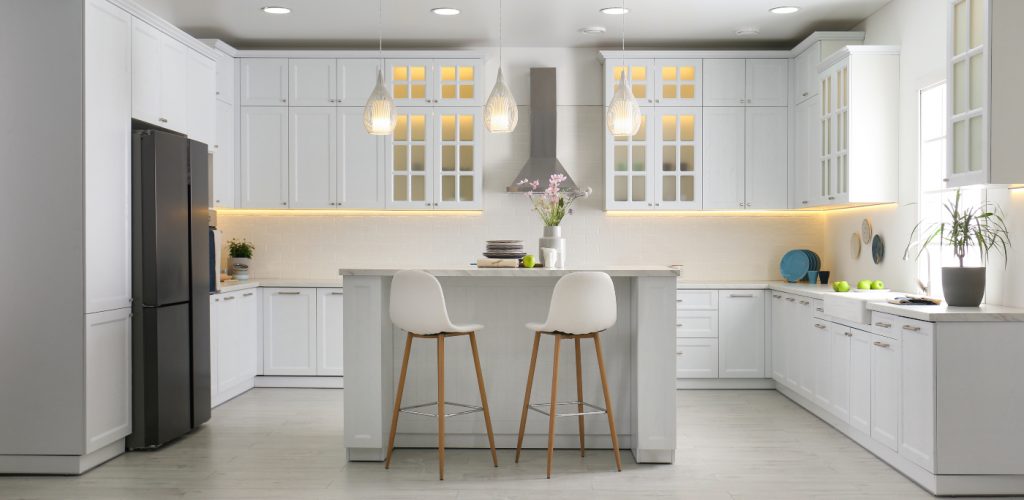Building a new home is an exciting venture, and one of the critical decisions you’ll face is choosing the right heating and cooling system. The options available today are more advanced and efficient than ever before, each with unique features and benefits. Here’s a comprehensive look at the heating and cooling options available in 2024, their costs, efficiency, technical details, and main components to help you make an informed decision.
1. Central Air Conditioning and Heating (HVAC) Systems
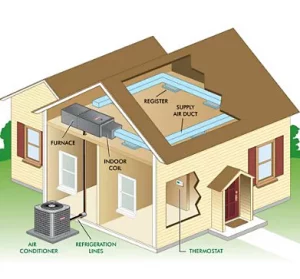
Features and Benefits:
- Whole-House Solution: Provides even temperature control throughout the home.
- Advanced Thermostats: Smart thermostats enhance energy efficiency by learning your schedule and adjusting temperatures automatically.
- Air Quality Improvement: Modern HVAC systems include advanced filtration to improve indoor air quality.
Costs:
- Installation: $6,000 – $12,000
- Maintenance: Annual costs around $150 – $500
Efficiency:
- SEER (Seasonal Energy Efficiency Ratio): High-efficiency models have SEER ratings of 16-20+.
- Energy Star Certification: Look for Energy Star-rated systems for optimal energy savings.
Technical Details and Main Components:
- Furnace or Air Handler: Burns fuel to produce heat (furnace) or contains the blower that circulates air (air handler).
- Outdoor Unit (Air Conditioner/Heat Pump): Contains the compressor and condenser coil.
- Evaporator Coil: Absorbs heat from indoor air.
- Refrigerant: Transfers heat between indoor and outdoor units.
- Ductwork: Distributes conditioned air throughout the home.
- Thermostat: Regulates the temperature and operation.
2. Heat Pumps
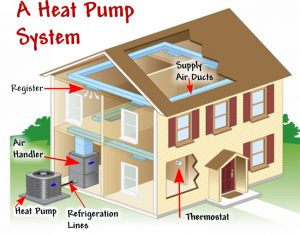
Features and Benefits:
- Dual Functionality: Provides both heating and cooling.
- Energy Efficiency: Uses less energy compared to traditional HVAC systems.
- Environmentally Friendly: Reduces carbon footprint by utilizing renewable energy sources.
Costs:
- Installation: $3,000 – $8,000
- Maintenance: Annual costs around $150 – $300
Efficiency:
- HSPF (Heating Seasonal Performance Factor): High-efficiency heat pumps have HSPF ratings of 8-10+.
- COP (Coefficient of Performance): Indicates the efficiency of heat pumps in heating mode, with high COP values preferred.
Technical Details and Main Components:
- Outdoor Unit (Compressor/Condenser): Compresses the refrigerant and releases or absorbs heat.
- Indoor Unit (Evaporator): Absorbs heat from indoor air.
- Refrigerant: Chemical compound that transfers heat.
- Reversing Valve: Changes the direction of the refrigerant flow to switch between heating and cooling modes.
- Expansion Valve: Reduces the pressure of the refrigerant.
- Thermostat: Controls the temperature and operation.
3. Ductless Mini-Split Systems
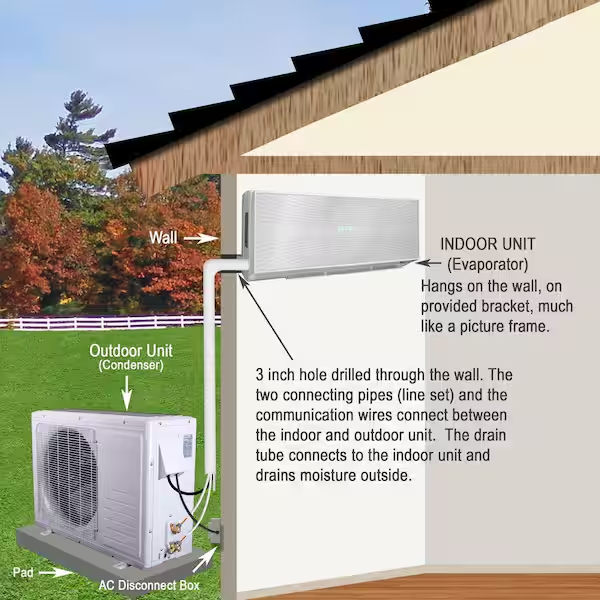
Features and Benefits:
- Zonal Control: Provides targeted heating and cooling to specific areas of the home.
- Flexible Installation: Ideal for homes without existing ductwork.
- Quiet Operation: Units operate quietly, making them ideal for bedrooms and living spaces.
Costs:
- Installation: $2,000 – $7,000 per unit
- Maintenance: Annual costs around $100 – $300
Efficiency:
- SEER Ratings: High-efficiency models can have SEER ratings of 20+.
- Inverter Technology: Ensures efficient operation by adjusting the compressor speed.
Technical Details and Main Components:
- Outdoor Unit: Contains the compressor and condenser coil.
- Indoor Unit: Contains the evaporator coil and blower fan.
- Refrigerant: Chemical compound that transfers heat.
- Conduit: Houses the refrigerant lines, electrical wiring, and a condensate drain.
- Remote Control or Wall-Mounted Thermostat: Controls the indoor unit.
- Mounting Bracket: Secures the indoor unit to the wall, ceiling, or floor.
Leading Option in 2024: Heat Pumps
In 2024, heat pumps are emerging as the leading choice for new home builders due to their energy efficiency, environmental benefits, and dual functionality. With advancements in technology, particularly in inverter technology and the availability of both air-source and ground-source options, heat pumps offer a versatile and cost-effective solution for heating and cooling.
Why Heat Pumps Lead:
- Energy Savings: High efficiency and lower operating costs compared to traditional HVAC systems.
- Environmental Impact: Reduced carbon footprint and use of renewable energy sources.
- Incentives: Many regions offer rebates and incentives for installing energy-efficient heat pumps.
Making the Best Choice for Your Home’s Heating and Cooling Needs in 2024
When building a new home or renovating a home, selecting the right heating and cooling system is crucial for comfort, efficiency, and long-term savings. Central HVAC systems, heat pumps, and ductless mini-splits each offer unique features and benefits. However, in 2024, heat pumps stand out as the leading option due to their dual functionality, high efficiency, and environmental benefits. Consider your specific needs, budget, and the long-term benefits of each system to make the best choice for your new home.

